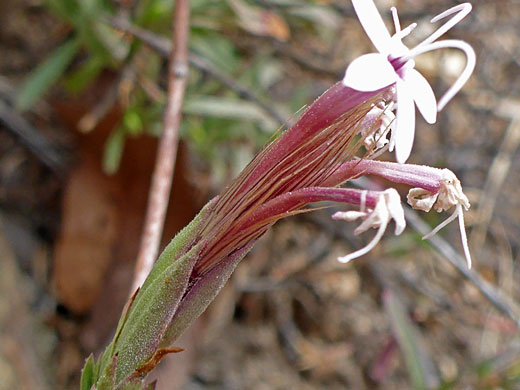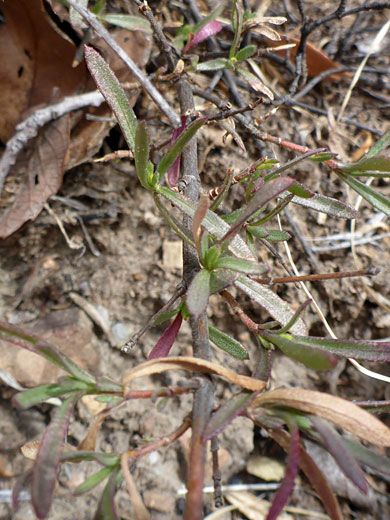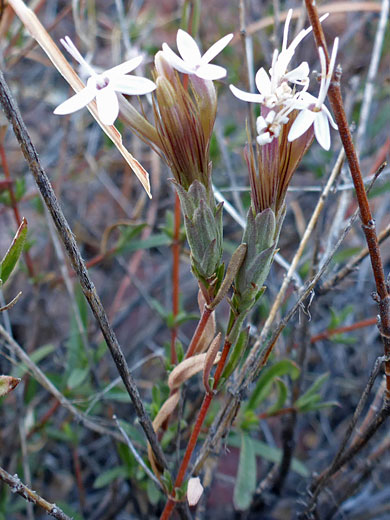Carphochaete Bigelovii, Bigelow's Bristlehead
Plants > Wildflowers > Asteraceae > Carphochaete Bigelovii
Common name:
Bigelow's bristlehead
Family:
Scientific name:
Carphochaete bigelovii
Main flower color:
Range:
Arizona, southwest New Mexico and the Big Bend area of west Texas
Height:
Usually up to four feet; sometimes much more
Habitat:
Rocky outcrops, sandy plains, grassland, woodland; 3,000 to 7,200 feet
Leaves:
Oblong to elliptical, opposite, up to 1.5 inches long
Season:
January to June
Carphochaete bigelovii is a shrub, producing branched, rigid stems, woody at the base, reaching heights of several feet. Stems are red to brown in color. This is the only species in a monotypic genus, and it has relatively limited distribution in the deserts of Arizona, south New Mexico and far west Texas. Leaves grow as pairs on the upper, newer stems, becoming clustered lower down, on older branches. Leaf surfaces are dotted with small glands.
Flowerheads are produced at the tips of the branches, on short stalks, and from the upper leaf nodes, where they are stalkless. The involucre is ringed by several rows of pointed, glandular phyllaries, which may have a very fine hair covering. Flowerheads usually contain three or four disc florets, sometimes as many as six, formed of five, narrow, triangular lobes and a branched stigma. Florets are colored white or pale link. Brownish bristles surround the florets, later developing into seeds.
Flowerheads are produced at the tips of the branches, on short stalks, and from the upper leaf nodes, where they are stalkless. The involucre is ringed by several rows of pointed, glandular phyllaries, which may have a very fine hair covering. Flowerheads usually contain three or four disc florets, sometimes as many as six, formed of five, narrow, triangular lobes and a branched stigma. Florets are colored white or pale link. Brownish bristles surround the florets, later developing into seeds.
All Contents © Copyright The American Southwest | Comments and Questions | Contribute | Site Map










